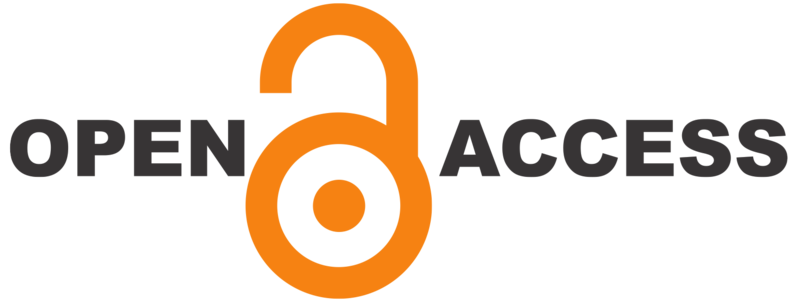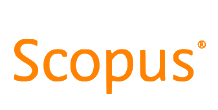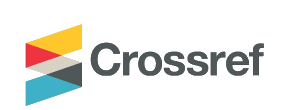Enhancing learning outcomes from industry engagement in Australian engineering education
DOI:
https://doi.org/10.21153/jtlge2019vol10no1art792Keywords:
engineering education, work integrated learning, curriculum development, co-op programs, accreditation, internships, work-based learning, employabilityAbstract
Industry engagement, commonly implemented as a 12 week industry placement during a vacation towards the end of the degree, has traditionally been a provider-mandated component of externally accredited professional engineering degrees in Australia. Such placements are intended to bridge knowledge and capability gaps between academic study and engineering employment and contextualise the final phase of academic study. Changes in the composition of Australia’s engineering industries have made it progressively harder to source such placements. In-curriculum exposure to engineering practice has also been expected, but has been delivered with considerable variability. In 2014 the authors completed a national project, led by the Australian Council of Engineering Deans (ACED), with peak industry bodies and several partner universities, funded from the Commonwealth Department of Industry Workplace Innovation Program, to explore how improving industry engagement could contribute further to engineering graduates’ learning outcomes and employability. The data collected from the engineering students and employers, reported in this paper, can now be regarded as baseline data on industry engagement, against which subsequent developments can be referenced. For the first time, students’ ratings of the value of different methods for industry engagement are shown to be related to their ‘authenticity’. Several industry-inspired in-curriculum interventions were also trialled at partner universities. Guidelines for good practice were developed from melding the experiential findings with theoretical perspectives. In the years since completing the project, the accreditation body, Engineers Australia, has updated and intensified its focus on engagement with practice (including changing its language from ‘exposure’ to ‘engagement’), and many engineering faculties have significantly enhanced their models and requirements for work integrated learning and industry engagement. This paper outlines these changes and examples of new implementations, including virtual and electronically-mediated methods that also reflect ongoing changes in engineering industry practice.
Metrics
References
Australian Council of Engineering Deans. (2017). Australian Engineering Education Student and Staff Statistics from National Data Collections – Januay 2017. Retrieved from https://www.engineersaustralia.org.au/sites/default/files/resource-files/2017-04/ACED%20Engineering%20Stats%2031%20Jan%202017.pdf
Australian Government Department of Education & Training (2018). Selected Higher Education Statistics – 2017 Student data. Retrieved from https://www.education.gov.au/selected-higher-education-statistics-2017-student-data
Australian Government Tertiary Education Quality and Standards Agency. (2017). Guidance Note: Work Integrated Learning. Retrieved from https://www.teqsa.gov.au/latest-news/publications/guidance-note-work-integrated-learning
Billett, S. (2011). Final report curriculum and pedagogic bases for effectively integrating practice-based experiences. Retrieved from Strawberry Hills NSW: http://www.altcexchange.edu.au/group/integrating-practiceexperiences-within-higher-education
Blandin, B. (2012). The Competence of an engineer and how it is built through an apprenticeship program: A tentative model. International Journal of Engineering Education, 28(1), 57-71.
Bodmer, C., Leu, A., Mira, L., & Rutter, H. (2002). SPINE: Successful Practices in International Engineering Education. Retrieved from http://www.ingch.ch/pdfs/spinereport.pdf
Bradley, A. (2008). Accreditation Criteria Guidelines Document G02 Rev 2 (G02). Retrieved from Barton, ACT: https://www.engineersaustralia.org.au/sites/default/files/content-files/2016-12/G02_Accreditation_Criteria_Guidelines.pdf
Cameron, I., Reidsema, C., & Hadgraft, R. (2011, 5-7 December). Australian engineering academe: a snapshot of demographics and attitudes. Paper presented at the 22nd Annual Conference of the Australasian Association for Engineering Education, Fremantle, WA.
Engineers Australia. (2013). Australian Engineering Stage 1 Competency Standards for Professional Engineers. Retrieved from Barton ACT: https://www.engineersaustralia.org.au/sites/default/files/content-files/2016-12/doc21_p05pe_ea_stage_1_competency_standards_for_pe.pdf
Engineers Australia Accreditation Centre. (2019). Accreditation Criteria User Guide – Higher Education AMS-MAN-10, section 3.4.
Faulkner, W. (2007). "Nuts and bolts and people": Gender-troubled engineering identities. Social Studies of Science, 37(3), 331-356.
Godfrey, J. E., & King, R. (2011). Curriculum specification and support for engineering education: understanding attrition, academic support, revised competencies, pathways and access. Strawberry Hills NSW: Australian Learning & Teaching Council.
International Engineering Alliance. (2014). 25 Years Washington Accord. Retrieved from http://www.ieagreements.org/25_years/25YearsWashingtonAccord-A5booklet-FINAL.pdf
Jollands, M., Boles, W., & Peterson, J. F. (2017). Developing students' employability in work placements. Paper presented at the Australasian Association for Engineering Education Conference, Manly, Sydney, Australia.
Kadi, A., & Lowe, D. (2018, 9-12 December 2018). A new professional engagement program – outline and initial outcomes. Paper presented at the Australasian Association for Engineering Education Conference, Hamilton, New Zealand.
Kelly, P., & Dansie, B. (2012). S2P student to practice, Hubs and Spokes Project Report.
King, R. (2008). Addressing the Supply and Quality of Engineering Graduates for the New Century. Retrieved from Surrey Hills NSW:
Leydens, J. A. (2012). Sociotechnical communication in engineering: an exploration and unveiling of common myths. Engineering Studies, 4(1), 1-9. doi:10.1080/19378629.2012.662851
Male, S. A., & Bennett, D. (2015). Threshold concepts in undergraduate engineering: Exploring engineering roles and value of learning. Australasian Journal of Engineering Education, 20(1), 59-69.
Male, S. A., Bush, M. B., & Chapman, E. S. (2010). Perceptions of competency deficiencies in engineering graduates. Australasian Journal of Engineering Education, 16(1), 55-68.
Male, S. A., Hargreaves, D. J., & Pointing, D. (2017, 10-13 December). The emerging suite of virtual work integrated learning modules for engineering students. Paper presented at the 28th Annual Conference of the Australasian Association for Engineering Education (AAEE 2017), Manly, NSW.
Male, S. A., Kenworthy, P., Hassan, G. M., Guzzomi, A. L., Van der Veen, T., & French, T. (2018). Teaching safety in design in large classes using VR. Paper presented at the Australasian Association for Engineering Education Conference, Hamilton, New Zealand.
Male, S. A., & King, R. (2014a). Best Practice Guidelines for Effective Industry Engagement in Australian Engineering Degrees. Retrieved from http://www.aced.edu.au/ doi:10.13140/RG.2.2.31950.87364
Male, S. A., & King, R. (2014b). Improving industry engagement in engineering degrees. Paper presented at the 25th Australasian Association for Engineering Education Conference, Wellington, New Zealand.
Male, S. A., King, R., & Hargreaves, D. (2016). Drivers and barriers to industry engaging in engineering education. Paper presented at the 12th International CDIO Conference, Turku University of Applied Sciences, Turku, Finland. http://julkaisut.turkuamk.fi/isbn9789522166104.pdf
Meyer, J. H. F., & Land, R. (2003). Enhancing Teaching-Learning Environments in Undergraduate Courses Occasional Report 4. Retrieved from http://www.etl.tla.ed.ac.uk/docs/ETLreport4.pdf
Nair, C. S., Patil, A., & Mertova, P. (2009). Re-engineering graduate skills - a case study. European Journal of Engineering Education, 34(2), 131-139.
Orrell, J. (2011). Good practice report: work integrated learning. Retrieved from Surry Hills, NSW: http://www.olt.gov.au/resource-work-integrated-learning-2011
Palmer, S., Tolson, M., Young, K., & Campbell, M. (2015). The relationship between engineering bachelor qualifications and occupational status in Australia. Australasian Journal of Engineering Education, 20(2), 103-112. doi:10.1080/22054952.2015.1092666
Prinsley, R., & Baranyai, K. (2015). STEM skills in the workplace. Occasional Paper Series Issue 9, (9). Retrieved from http://www.chiefscientist.gov.au/wp-content/uploads/OPS09_02Mar2015_Web.pdf
Raelin, J. A. (2007). Toward an epistemology of practice. Academy of Management Knowledge & Education, 6(4), 495-519.
Rooney, D., Boud, D., Reich, A., Fitzgerald, T., Willey, K., & Gardner, A. (2012, 2-5 December). Using practice theory to investigate professional engineers' workplace learning. Paper presented at the 23rd Annual Conference of the Australasian Association for Engineering Education Conference, Swinburne University of Technology, Melbourne.
Sheppard, S. D., Macatangay, K., Colby, A., & Sullivan, W. M. (2009). Educating engineers: Designing for the future of the field. San Francisco, CA: Jossey-Bass.
Spinks, N., Silburn, N., & Birchall, D. (2006, March). Educating engineers for the 21st century: The industry view. Retrieved from http://www.raeng.org.uk/news/releases/henley/pdf/henley_report.pdf
Tilli, S., & Trevelyan, J. P. (2010). Labour Force Outcomes for Engineering Graduates in Australia. Australasian Journal of Engineering Education, 16(2), 101-122.
Trevelyan, J. P. (2010). Reconstructing Engineering from Practice. Engineering Studies, 2(3), 21.
Universities Australia, Australian Chamber of Commerce and Industry, Ai Group, Business Council of Australia, & Australian Collaborative Education Network. (2015). National Strategy on Work Integrated Learning in University Education. Retrieved from http://cdn1.acen.edu.au/wp-content/uploads/2015/03/National-WIL-Strategy-in-university-education-032015.pdf











